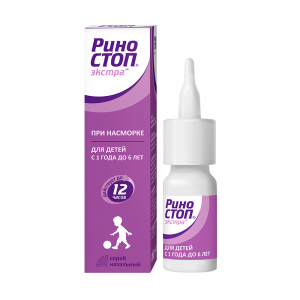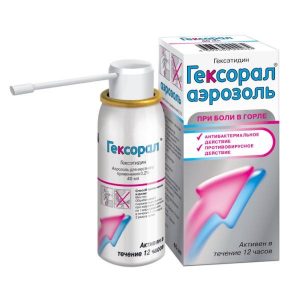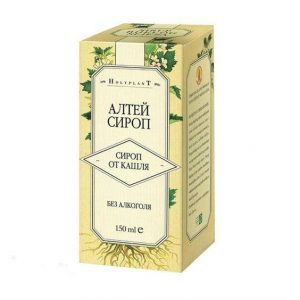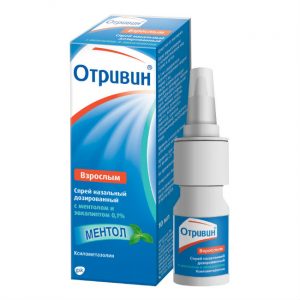Description
Pharmacological action
Acetylcysteine is a mucolytic, expectorant used to thin the sputum in diseases of the respiratory system. Acetylcysteine is a derivative of the natural amino acid cysteine (N-acetyl-L-cysteine). It has a pronounced mucolytic effect, belongs to the class of direct mucolytics.
The action of acetylcysteine is associated with the ability of the free sulfhydryl group to cleave intramolecular and intermolecular disulfide bonds of sputum glycoprotein aggregates, which leads to the depolymerization of mucoproteins, having a strong thinning effect and reducing the viscosity of mucus.
Acetylcysteine exhibits mucolytic activity against any type of sputum – mucosa, mucopurulent, purulent. Acetylcysteine increases the secretion of less viscous sialomucins by goblet cells, reduces the adhesion of bacteria on the epithelial cells of the bronchial mucosa. Stimulates mucous cells of the bronchi, the secret of which lyses fibrin.
Acetylcysteine dilutes sputum, increases its volume, facilitates the separation of sputum and greatly softens cough.
In addition to its direct mucolytic effect, acetylcysteine has powerful antioxidant pneumoprotective properties that provide effective protection of the respiratory system from the toxic effects of negative factors: inflammation metabolites, environmental factors, and tobacco smoke.
Acetylcysteine has a direct antioxidant effect, because it includes a free thiol group (-SH), capable of directly interacting and neutralizing electrophilic oxidative toxins.
In addition, it reduces induced hyperplasia of mucoid cells, enhances the production of surface-active compounds by stimulating type II pneumocytes, and stimulates mucociliary activity, which leads to an improvement in mucociliary clearance.
Stimulates mucous cells of the bronchi, the secret of which lyse fibrin. It has a similar effect on the secret formed during inflammatory diseases of the ENT organs.
Acetylcysteine protects alpha1-antitrypsin (an enzyme that inhibits elastase) from the loss of activity that can occur as a result of exposure to HOCL – a powerful oxidizing substance, produced by the enzyme myeloperoxidase active phagocytes.
Acetylcysteine is deacetylated by penetrating easily into the cell, releasing L-cysteine, an amino acid necessary for the synthesis of glutathione, which is the most important factor in intracellular protection against exogenous and endogenous oxidative toxins and various cytotoxic substances. This feature of acetylcysteine makes it possible to effectively use the latter in acute poisoning with paracetamol and other toxic substances (aldehydes, phenols, etc.).
Mucolytic properties of acetylcysteine begin to appear within 1-2 days from the start of therapy.
Indications
Mucolytic agent for the treatment of acute and chronic respiratory diseases associated with excessive secretion of bronchial secretions: bronchitis, tracheitis, bronchiolitis, pneumonia, bronchiectasis, cystic fibrosis, lung abscess, pulmonary emphysema, lung laryngotracheitis, interstitial due to obstruction of the bronchi with a mucous plug).
Catarrhal and purulent otitis media, sinusitis, sinusitis (easier secretion).
Removing viscous secretions from the respiratory tract in post-traumatic and postoperative conditions.
Contraindications
Hypersensitivity to acetylcysteine and other components of the drug
peptic ulcer of the stomach and duodenal ulcer,
hemoptysis,
pulmonary hemorrhage,
hereditary lactose intolerance,
lactase deficiency,
glucose-galactose malabsorption,
phenylketonuria,
children under 2 years old (for 100 mg, 200 mg dispersible tablets),
children under 14 years old (for 600 mg tablets) pregnancy and the period of breastfeeding.
Precautions:
– Bronchial asthma,
– liver and / or renal failure,
– adrenal gland disease,
– varicose veins of the esophagus,
– arterial hypertension,
– tendency to pulmonary hemorrhage, hemorrhage, hemorrhage, blood and gland disease, history of the duodenum,
– histamine intolerance (long-term use of the drug should be avoided, as acetylcysteine affects the metabolism of histamine and can lead to signs of intolerance, such as headache, vasomotor rhinitis, itching).
Special instructions
The drug contains aspartame, its use in patients with phenylketonuria is contraindicated.
When dissolving acetylcysteine, you must use glassware, avoid contact with metal, rubber surfaces, oxygen and easily oxidized substances.
With the use of acetylcysteine, cases of the development of severe allergic reactions, such as Stevens-Johnson syndrome, toxic epidermal necrolysis (Lyell’s syndrome), have been very rarely reported. If changes in the skin and mucous membranes occur, you should immediately consult a doctor, you must stop taking the drug.
Patients with asthma and obstructive bronchitis, acetylcysteine should be prescribed with caution under the systematic control of bronchial obstruction.
You should not take the drug immediately before bedtime (it is recommended to take the drug before 18: 00).
Acetylcysteine can slightly affect histamine metabolism, therefore caution must be exercised when using the drug for long-term treatment of patients suffering from histamine intolerance, with symptoms of intolerance (headache, vasomotor rhinitis, pruritus).
Impact on the ability to drive transp. Wed and fur.: In therapeutic doses, acetylcysteine does not affect the ability to drive vehicles and mechanisms.
Dosage and administration
Dispersible tablets can be taken in various ways: the tablet can be swallowed whole, washed down with water or previously dissolved in water before use. Tablets should be dissolved in at least 50 ml of water. Before taking, thoroughly mix the resulting suspension.
Mucolytic therapy
Adults: 600 mg (in terms of the required number of dispersible tablets) 1 time per day or 300 mg (in terms of the required number of dispersible tablets) 2 times a day or 200 mg (in terms of the required number of dispersible tablets) 3 once a day.
The maximum daily dose of apetilcysteine is 600 mg / day.
Children:
– children from 2 to 6 years: 100 mg (in terms of the required number of dispersible tablets) 2-3 times a day (corresponding to 200-300 mg of apetilcysteine per day).
– children from 6 to 14 years: 100 mg (in terms of the required number of dispersible tablets) 3-4 times a day or 200 mg (in terms of the required number of dispersible tablets) 2 times a day (corresponds to 300-400 mg of acetylcysteine day).
– children over 14 years of age: 300 mg (in terms of the required number of dispersible tablets) 2 times a day or 200 mg (in terms of the required number of dispersible tablets) 2-3 times a day (corresponding to 400-600 mg of acetylcysteine per day) .
Cystic fibrosis
– children from 2 to 6 years: 100 mg (in terms of the required number of dispersible tablets) 3-4 times a day (corresponds to 300-400 mg of acetylcysteine per day)
– children from 6 to 14 years: 100 mg (in terms of the required number of dispersible tablets) 4 times day or 200 mg (in terms of the required number of dispersible tablets) 2-3 times a day (corresponds to 400-600 mg of acetylcysteine per day)
– children over 14 years old and adults: 200 mg (in terms of the required number of dispersible tablets) 3 once a day or 300 mg (in terms of the required number of tablets it is dispersible) 2 times a day (corresponds to 600 mg of acetylcysteine per day).
Duration of treatment should be evaluated individually. In acute diseases, the duration of the course of treatment is from 5 to 10 days in the treatment of chronic diseases – up to several months (on the recommendation of a doctor).
If there is no improvement after treatment or the symptoms worsen or new symptoms appear, you should consult your doctor. Use the drug only according to the method of application and at the doses indicated in the instructions.
Side effects
The incidence of side effects is classified according to the recommendations of the World Health Organization: very often ( 1/10), often ( 1/100, <1/10), infrequently ( 1/1000, <1/100) , rarely ( 1/10 000, <1/1000), very rarely (<1/10 000), the frequency is unknown: the frequency cannot be estimated based on available data. For each frequency group, adverse events are presented in decreasing order of severity. From the side of the immune system: infrequently – hypersensitivity is very rare – anaphylactic shock, anaphylactic / anaphylactoid reaction. From the nervous system: infrequently – headache. From the organs of hearing and the inner ear: infrequently – tinnitus. From the side of the heart: infrequently – tachycardia. From the vascular system: very rarely – bleeding. From the side of the respiratory organs of the chest aunt and mediastinum: rarely – bronchospasm, dyspnea. Gastrointestinal disturbances: infrequently – vomiting, diarrhea, stomatitis, abdominal pain, nausea rarely – dyspepsia. From the skin and subcutaneous tissues: infrequently – urticaria, rash, angioedema, itching. General violations and conditions at the points of use: infrequently – pyrexia frequency is unknown – swelling of the face. Analyzes and studies: infrequently – low blood pressure. In very rare cases, serious skin reactions such as Stevens-Johnson syndrome and Lyell syndrome have been reported in chronological dependence on the use of acetylcysteine. In most cases, at least one concomitantly administered drug could be involved in triggering the above mucocutaneous syndromes. For this reason, you should immediately consult a doctor if there are any new changes in the skin or mucous membrane, and immediately stop taking acetylcysteine. Decreased platelet aggregation in the presence of acetylcysteine has been confirmed by various studies. Clinical significance has not yet been established. If you have any side effects that are indicated in the instructions, or they are exacerbated, or you notice any other side effects that are not listed in the instructions, inform your doctor. Storage conditions At a temperature not exceeding 25 ° C. Keep out of the reach of children. Expiration 3 years. Do not use after expiration date. dosage form tablets soluble




